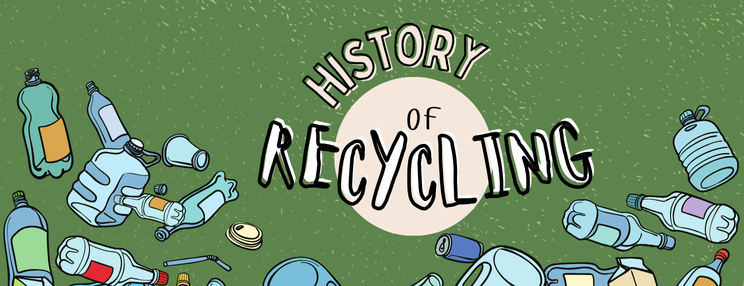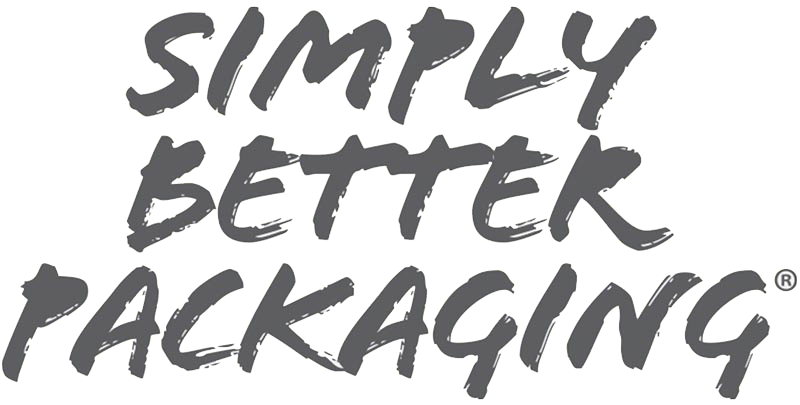History of Recycling in the U.S.

“Pre-Recycling”
Many historians argue that in the 1800s, we were actually better at recycling than we are today. In the 19th century, long before “official” recycling programs, people reused and repurposed almost all their materials out of economic necessity. Prior to the industrial revolution later in the century, most of one’s goods were locally handmade, so people understood the value of materials. For example, instead of purchasing new clothes, they were mended and altered to follow current trends. Food scraps and other organics were fed to animals or used for fertilizer.
The closest thing to modern recycling collection was rag pickers going door-to-door to purchase rags to make into paper. Used materials were in such high demand that it formed a market for scrap material dealers, many of which were shady businesses because they incentivized stealing. In the late 19th century, some cities began sorting trash from reusable materials by hand on conveyor belts to sell back to industries. Bottle return deposits were a popular way for beverage companies to reduce costs spent on the production of expensive glass bottles by incentivizing consumers to return used bottles for a few cents.
In the 1920s came a short period where not much was recycled, aside from scrap metal. The concept of throwing out worn out items is a new 20th century concept as a product of changing consumer culture that said new is better than old and viewed goods as disposable rather than reusable.
WWII and the Environmental Movement
In the ‘40s, the federal government began recycling campaigns to support military needs. These campaigns asked people to collect paper, rags, scrap metal, rubber, and even cooking fats, which were repurposed for explosives. However, some historians speculate that the majority of collected items just piled up and went unused. They propose that the campaign was mostly just a propaganda effort to drum up support for the war by giving the everyday person a role, making them feel like a united front. Regardless, these efforts created a significant increase in public awareness and participation in recycling.
Because so many factory production lines were converted from peacetime products to wartime essentials, consumers went back to purchasing less and repurposing certain products. Some companies even marketed their products for their dual use potential. Post-WWII, as the economy grew, so did consumer demand for single-use products like cans, bottles, etc.
It wasn’t until the ‘60s that the environmental movement started gaining momentum. Environmental leaders started raising awareness of the science of ecology and environmental threats like industrial waste. Recycling shifted from practical motivation to an altruistic personal manifestation for the environment. This era saw the introduction of the first public recycling programs. However, recycling was still impractical for most because it required driving your items to recycling centers, so few people did it.
Beginning of Recycling Legislation
By the ‘70s, landfills were filled with all the waste produced after WWII. So, the government began rolling out recycling initiatives for their economic and strategic role. Curbside recycling programs began popping up but varied from city to city. During this time, some companies began putting out recycling PSAs and advertising that framed waste as a consumer rather than producer problem. This perspective meant taxpayers would need to fund the infrastructure and do the work to recycle products, which was financially advantageous for the producers.
The 90s boasted the establishment of public recycling collection in more than 10,000 cities, and curbside recycling became more common. However, the increase in volume created issues in contamination and underscored a lack of recycling infrastructure to keep up with supply. Recycling was no longer a way for consumers to get more from their purchases and cost them time and/or money.
Recycling Today
Now, recycling practices, accessibility, and guidelines are not standardized across regions, leading to recycling errors and ineffective management of these materials, creating more waste. Public misunderstandings about what can and can’t be recycled are very common, so many choose not to participate altogether. Some would argue that this lack of mandated recycling in most states or communities is also a shortcoming of the current recycling system, as it removes the responsibility of individuals.
Since China stopped importing recyclables in 2017, the U.S. recycling industry has been especially overloaded with material. In today’s world of rapid mass production, the production of waste has outpaced the growth of recycling infrastructure to manage the materials coming in. US recycling programs weren’t built to support this volume because recycling wasn’t intended to be the single solution to waste. Additionally, many of today’s products are made with complex materials, like layered packaging, that can’t be recycled with current technology. With these inefficiencies in recycling infrastructure, the cost of recycling is often higher than typical waste disposal.
The U.S. recycling industry is flawed, but it can be fixed. The government is actively making efforts to modernize recycling technology through initiatives like the Circle Act and National Recycling Strategy. Increasing access to recycling services is also key, as 40% of households in the U.S. still lack access. On top of that, steps like clear labels for types of recycling, adding recycling in public spaces, and expanding curbside programs would increase the ease of recycling and encourage participation. On the business side, the government could incentivize corporate responsibility through tax breaks, subsidies, etc. for firms that take steps like in-house recycling programs, integrating recycled materials into products, or reducing waste.
Recycling wasn’t invented with the U.S. recycling program. Rather, recycling was already around, just changed, so it can be changed again.
Sources
When Did Americans Start Recycling? | HISTORY
America Recycles Day 2016: A Brief History of Recycling | TIME
Recycling in the United States – Wikipedia
Recycling in Crisis: Why It’s Failing & How to Fix It
ABOUT PLACON
Since 1966, Placon has been a leading designer and manufacturer of innovative and sustainable plastic packaging for medical, food, and consumer goods markets. Placon has manufacturing operations in Madison, WI; West Springfield, MA; Elkhart, IN; and Plymouth, MN, and is currently ranked in the Top 20 in Plastics News 2024 Thermoformers Rankings. Placon delivers packaging breakthroughs that inspire better engagement between people and products.




